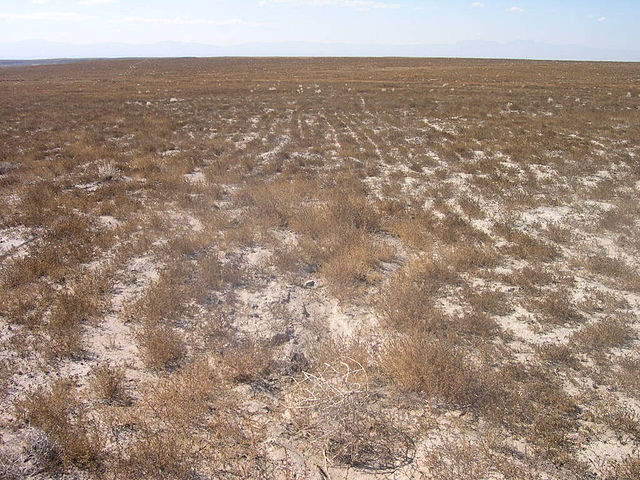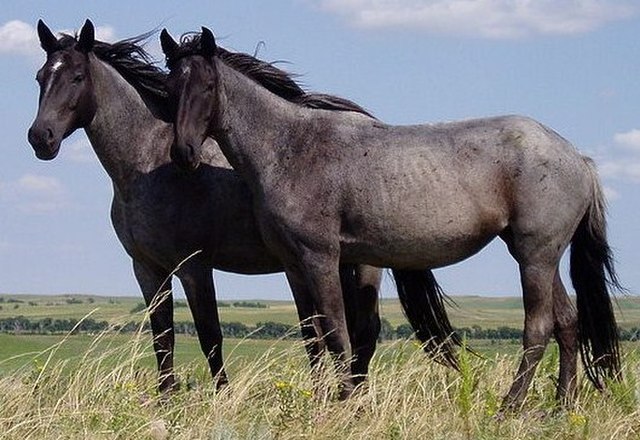Rangelands are grasslands, shrublands, woodlands, wetlands, and deserts that are grazed by domestic livestock or wild animals. Types of rangelands include tallgrass and shortgrass prairies, desert grasslands and shrublands, woodlands, savannas, chaparrals, steppes, and tundras. Rangelands do not include forests lacking grazable understory vegetation, barren desert, farmland, or land covered by solid rock, concrete and/or glaciers.
Red Desert rangeland in Wyoming. Water from melted snow pack can be seen on the ground. Such melting is the main source of surface water in Wyoming.
Weeds are all that remains in Idaho after overgrazing, wildfires, and subsequent invasion by non-native species. Russian thistle (Kali tragus) is the only plant species seen in this picture.
Konza Prairie
Buffalo grazing on rangeland in Crook County, Wyoming.
Livestock are the domesticated animals raised in an agricultural setting in order to provide labour and produce diversified products for consumption such as meat, eggs, milk, fur, leather, and wool. The term is sometimes used to refer solely to animals who are raised for consumption, and sometimes used to refer solely to farmed ruminants, such as cattle, sheep, and goats. Horses are considered livestock in the United States. The USDA classifies pork, veal, beef, and lamb (mutton) as livestock, and all livestock as red meat. Poultry and fish are not included in the category. The latter is likely due to the fact that fish products are not governed by the USDA, but by the FDA.
Cattle on a pasture in Austria
Sheep in Écrins National Park (France)
This Australian road sign uses the less common term "stock" for livestock.
Image: Nokota Horses cropped








